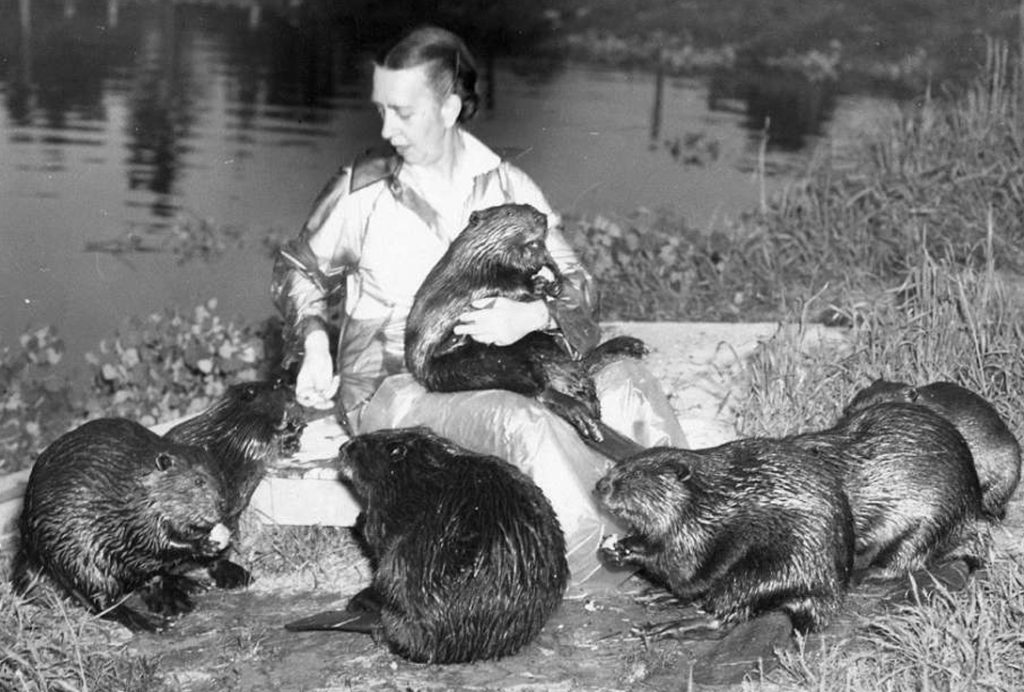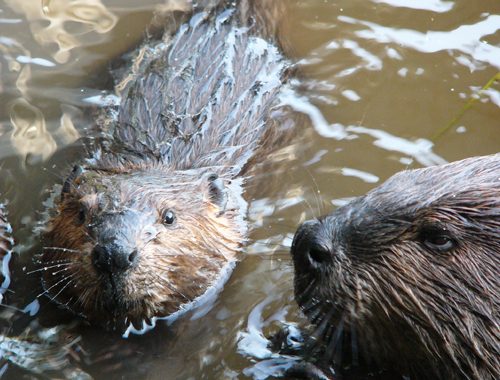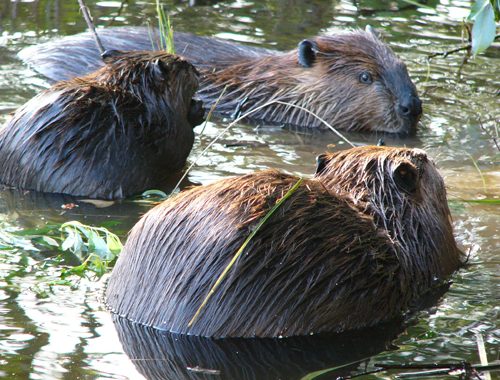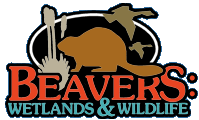HISTORY

“Beaver Woman” Dorothy Richards
Friends and professional associates of the “Beaver Woman” Dorothy Richards created a nonprofit, Friends of Beaversprite, after her death in 1985 to carry on her educational efforts. Mrs. Richards first became interested in beavers in 1935 after reading Pilgrims of the Wild by Grey Owl. He was called the “first modern conservationist” because of his pioneering work to save wilderness.
Beaversprite Sanctuary
Dorothy Richards studied beavers at Beaversprite Sanctuary in New York’s Adirondack Mountains for fifty years. She welcomed over 100,000 visitors to her house, where two consecutive beaver families lived in an addition, called the “Y.” As part of her lifework to enlighten the public about this important, but shy, species, she wrote Beaversprite, My Years Building an Animal Sanctuary with the help of Hope Sawyer Buyukmihci. Mrs. Buyukmihci, who founded Beaver Defenders and Unexpected Wildlife Refuge in New Jersey, became a founding member of our nonprofit’s Advisory Board and wrote a column for our news-magazine, Beaversprite.
Our First Project
Our first project was to finish Dorothy Richards’ efforts to reform the management of the 1,300-acre Beaversprite Sanctuary. After Mrs. Richards had donated her sanctuary to the Erdman Trust in 1965, she became distressed by many reports of management abuses. She related these reports to the Pennsylvania-based Erdman trustees for several years, but they responded by changing the refuge’s name to Florence Jones Reineman Wildlife Sanctuary, leaving only her house and immediate environs as Beaversprite Sanctuary.
Our nonprofit succeeded with reforms, via a complaint to the New York Charity Bureau and subsequent publicity, to the extent that the local sanctuary manager and a Philadelphia-based management company were ousted. To further secure Mrs. Richards’ legacy, we received a grant from Argus Archives to have the award-winning film-strip “My Forty Years with Beavers” about her lifeworks put on video.
finding peaceful solutions
Next, the goal of finding lasting, peaceful solutions to beaver/human conflicts became our nonprofit’s primary mission. A “Beaver Baffler Committee” had formed early on, and two of our nonprofit’s leaders visited Canada’s Gatineau Park to study their successful water control devices. By 1995 we had published the first edition of the “How to Control Beaver Flooding” booklet. As our nonprofit grew from being a watchdog over a New York sanctuary to becoming an internationally recognized authority on beavers, a name change was in order. To more accurately reflect the scope of our environmental organization, in 1996 the Board of Friends of Beaversprite changed the name to Beavers: Wetlands & Wildlife (BWW).


Scientific Information
During the 1990s scientific information provided by Beavers: Wetlands & Wildlife (BWW) helped stop anti-beaver legislation in several states, in an effort to replace such ecologically harmful, inhumane and expensive efforts with lasting, environmentally sound solutions. For example, BWW partnered with the Fund for Animals to stop several New York bills to allow indiscriminate slaughter of beavers. BWW spearheaded the formation of a coalition of a dozen environmental and wildlife organizations, and took a giant inflated beaver to a press event at the state capitol to symbolize the enormous importance of the beaver to the ecology. Funding was eventually added to the state’s Environmental Bond Act for structural solutions to conflicts.
One of BWW’s leaders was a licensed wildlife rehabilitator, who was given four orphaned beaver kits to raise. This experience led to the creation of a short children’s video that shows highlights of the first two years of the kits’ lives. This popular “Meet the Beaver” video is shown in science museums, often playing continuously inside a replica of a beaver lodge that children can enter.
Humane Society Partnership
BWW, partnered with the Humane Society of the U.S. in 1999, to put on a two-day international conference called “Living with Beavers.” The event included demonstrations of several flow devices with funding for these provided by US Fish and Wildlife Service’s Partners for Wildlife Program.
We were often asked speak at conferences in different states–or even, other countries, such as an event in China. At a conference in Maryland, BWW was asked to write a technical paper about managing beaver flooding for the U.S. Army Corps of Engineers. That paper, “Control of Beaver Floodingat Restoration Projects” was published in 2001.
As BWW continued to specialize in solving conflicts with beavers, we were regularly asked to consult, lead field trips and give programs at various locations. For example, a trip to New Hampshire included an afternoon field trip and consultation at a beaver pond, plus an evening program with a question and answer period.
Coexisting with Beavers
Often, people have problems with beaver flooding, yet no one with experience installing flow devices is in their area. To help solve this dilemma, in 2006 BWW helped create a DVD called “Coexisting with Beavers” that shows how to build and install a Flex Pipe and Cage leveler device. Matt Perry, the Conservation Director of Spring Farm CARES and a BWW Board member, made the three-part DVD, which also includes a section on beaver natural history plus a short segment about the “Beaver Woman” Dorothy Richards.
Because Mrs. Richards’ life as a naturalist and educator remains an inspiration, in 2008 the BWW Board chose her birthday, April 7, for International Beaver Day. To celebrate the first International Beaver Day in 2009, BWW had a special “Teacher’s Edition” of the “Coexisting…” DVD made, and distributed almost a thousand free copies to science teachers.
